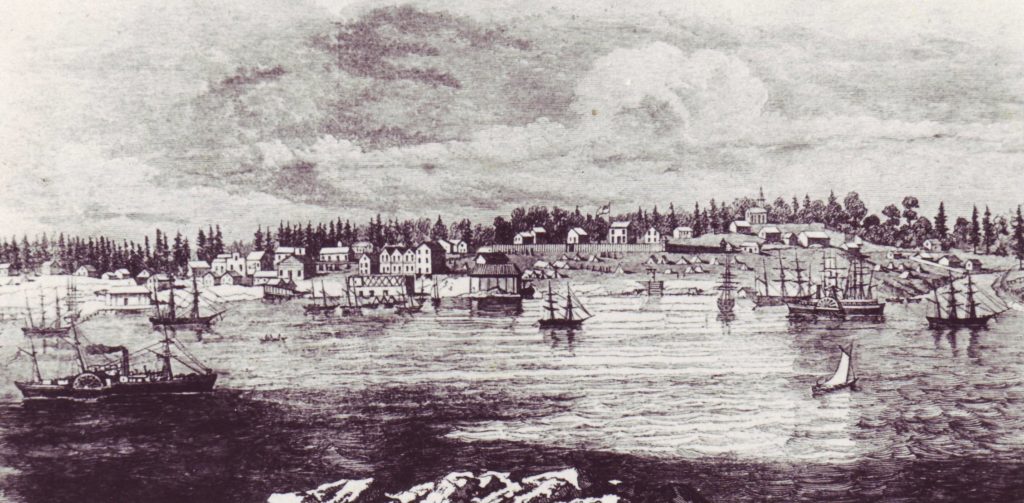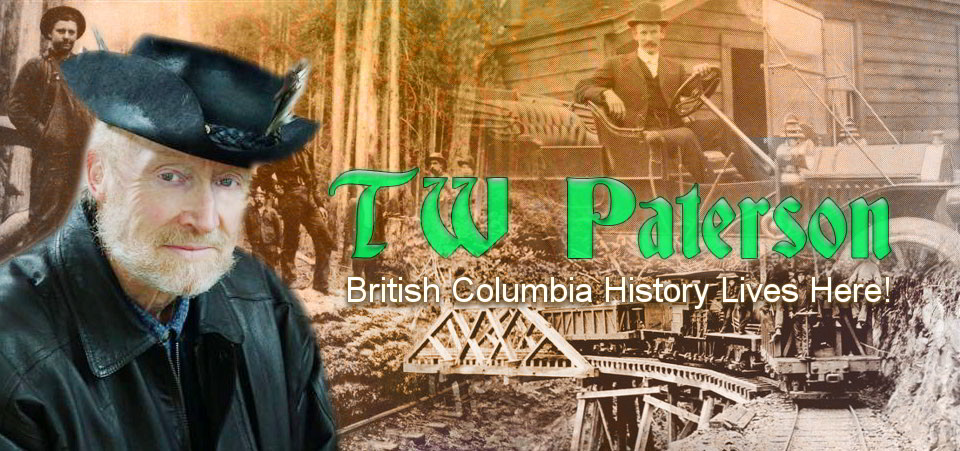Capt. James Christensen: B.C.’s First Commercial Seal Hunter Was a Bust
When Capt. James Christensen, mariner retired, looked back upon a lifetime of adventure and achievement, few could challenge his claim to being British Columbia’s grand old man of seafaring.

As trader, sealer, tugboat skipper, steamship captain and pilot, he’d survived shipwreck and almost single-handed provoked an international incident between Great Britain and the United States.
To say the least, the career of Capt. James Christensen, a biographer noted in 1904, was “a chronicle of the development of British Columbia’s shipping”.
Right up until his 80th birthday, when he reluctantly swallowed the anchor, Capt. Christensen had performed his duties “on the swaying rope ladder” with fellow pilots half his age. In fact, but for a government ruling that he was too old for such an arduous profession, he might well have continued responding to four whistles, the pilot’s call, indefinitely.
To this mariner goes the credit (although we’re likely to think differently of it today) of having virtually put Victoria on the map as home port to the largest sealing fleet on the continent by conceiving the idea of making sealing on the West Coast a profitable industry.
Upon landing in Victoria in 1864 as a 24-year-old seaman aboard the sailing vessel King Oscar, the young Dane and his fellow seamen found themselves on the beach when their ship was sold out from under them. By the time the Oscar’s master read the fine print of the sales contract, which called for him to deliver the ship to an Australian port, Christensen had decided that he liked Victoria and had vanished into the wilds of Saanich to work as a farmhand until shesailed.
He then downed his pitchfork and headed back to the waterfront where he gained a berth with Capt. Charles Spring, a trader well-known for his dealings along the Island’s west coast. Spring liked what he saw in the young Dane and soon promoted him to being master of the schooner Surprise. In this capacity, Christensen spent the next several years navigating the treacherous west coast while engaged in “collecting peltry from the Indians [sic]”.
It was during this ofttimes hazardous employment that he first gave serious thought to commercial sealing. For an entire season he’d been unhappy with the dry condition of the skins which he was trading from the coastal tribes, and he suggested to his employer that it would be better business, the following spring, to send one of the schooners after the seals.
This would insure, if nothing else, that the pelts would be in prime condition.
Capt. Spring, he recounted years afterwards, was unimpressed; in fact, he laughed in his face. But when an angered Christenesen replied that, had he the financing he’d outfit his own schooner, Spring reluctantly agreed to the experiment.
Accordingly, in the spring of 1870, Capt. Christensen sailed in pursuit of the seal herds. The first step of his plan called for him to put in at Clayoquot to hire Native hunters with their canoes and equipment, payment to be made on a shares basis with each hunter keeping two of every three skins he captured. The Clayoquot (Tla-o-qui-aht First Nation) chief not only greeted his proposal with enthusiasm, but wanted to go along.
However, Capt. Christensen hadn’t taken into account the Clayoquots’ sense of independence and free enterprise.
After talking over his proposal, they told him they’d always done well in the past–without having to give up one-third share to the schooner. They also didn’t believe his impassioned argument that, by means of a ship, they’d be able to harvest seals in greater numbers.
When, finally, he did sail, he had just four hunters on board.
Upon sighting a herd, the native hunters launched their canoes, returning to the mother ship with nine skins–three for the ship, six for themselves. Capt. Christensen was ecstatic at even this modest success and, at daybreak, the hunters set out again with more enthusiasm.
However, a heavy fog descended upon the horizon, blocking their return to the ship. For the rest of the day, Capt. Christensen ghosted back and forth through the mists, blowing his foghorn and firing flares. But night came without an answering hail from the gloom and as the hours passed by he paced the deck in growing alarm. With morning, the fog lifted slightly–enough for him to see two of the canoes, which he soon hauled aboard. There was no sign of the others.
The surviving sealers demanded that he return them to Clayoquot.
Christensen, having no choice, put about and, once back at their village, the hunters charged ashore, leaving him, unsure of the reception he’d receive, to follow with a long face.
To his amazement, he found his missing hunters, not only alive and hearty, but sitting before a warm fire and feasting on seal flesh and laughing at his obvious bewilderment. He was so disgusted that he sailed back to Victoria;
Capt. James Christensen, the first man to attempt organized commercial sealing in B.C. history, had failed. That time. But he was no quitter; he tried again and Pelagic sealing became a decade-long industry with Victoria as its homeport.
